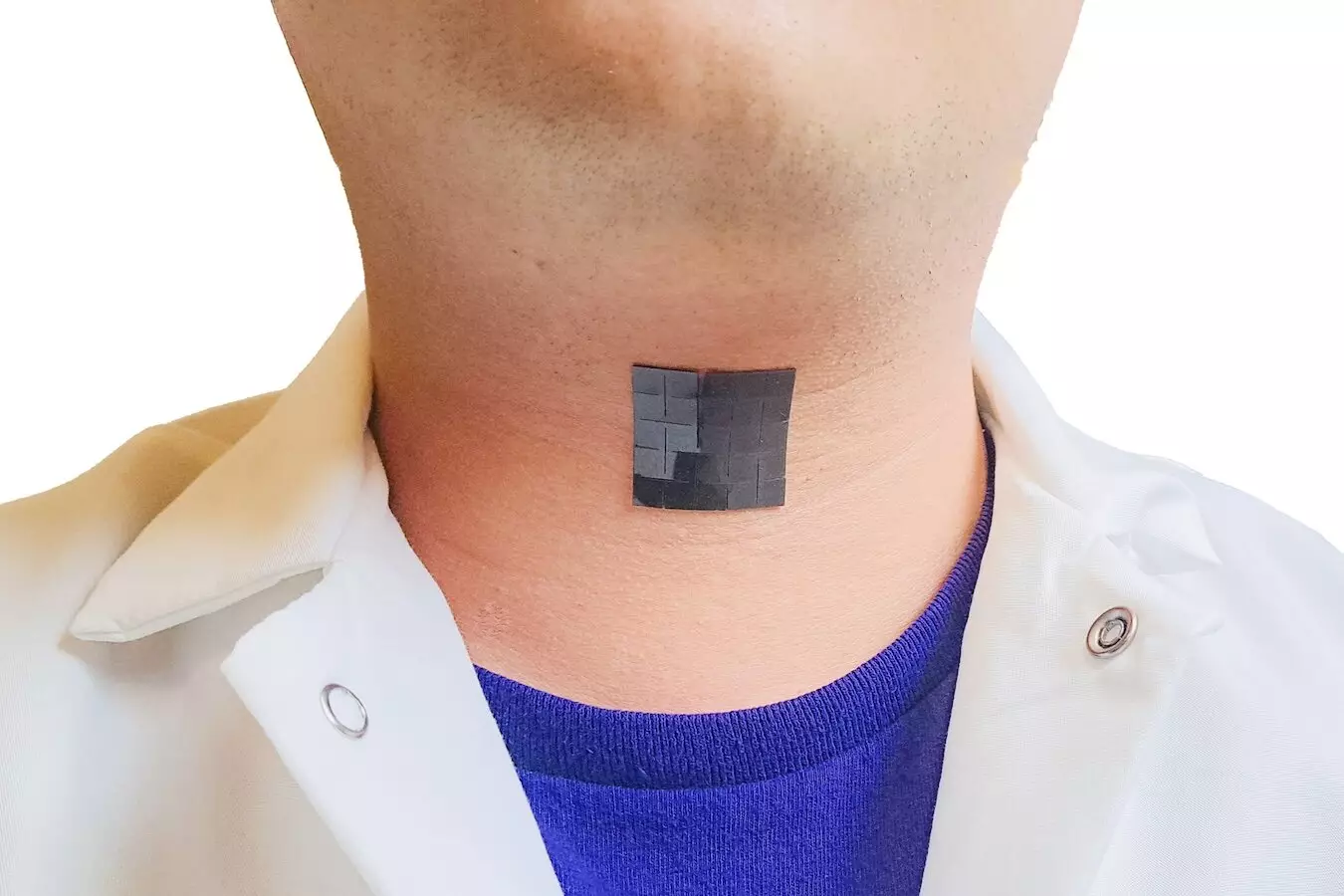Voice disorders can have a significant impact on an individual’s quality of life, making it difficult or impossible to communicate effectively. However, a recent breakthrough in bioelectric technology by a team of UCLA engineers may change the game for people with dysfunctional vocal cords. This innovative device, a soft, thin, stretchy patch measuring just over one square inch, has the potential to help individuals with voice disorders regain their ability to speak with nearly 95% accuracy.
The new bioelectric system, developed by Jun Chen and his colleagues, consists of two key components. The self-powered sensing component detects and converts signals generated by muscle movements in the larynx into high-fidelity electrical signals. These signals are then translated into speech signals using a machine-learning algorithm. The actuation component of the device turns these speech signals into the desired voice expression, providing a lifelike and natural voice output for the user.
The device utilizes a unique soft magnetoelastic sensing mechanism developed by Chen’s team, which is capable of detecting changes in the magnetic field when laryngeal muscles are in motion. The device is made up of layers of biocompatible silicone compound with elastic properties, as well as magnetic induction layers containing copper induction coils. These components work together to generate high-fidelity electrical signals for sensing purposes, allowing for accurate translation of muscle movements into audible speech.
Voice disorders are prevalent across all age groups and demographics, with nearly 30% of people experiencing such a disorder in their lifetime. Current therapeutic approaches for voice recovery, such as surgical interventions and voice therapy, can be time-consuming and invasive, with recovery periods stretching from three months to a year. The new device offers a wearable, non-invasive solution that can assist patients in communicating during the pre-treatment and post-treatment recovery periods for voice disorders, providing a more convenient and comfortable alternative to existing solutions.
In initial experiments, the researchers tested the wearable technology on healthy adults and demonstrated its accuracy in translating laryngeal muscle movements into speech signals. The device showed an overall prediction accuracy of 94.68%, with participants able to produce voice signals corresponding to the words they intended to say. Moving forward, the research team plans to expand the vocabulary of the device through machine learning and to test it in individuals with speech disorders, paving the way for potential widespread use of this groundbreaking technology.
Overall, the development of this bioelectric device represents a significant advancement in the field of voice recovery technology. By providing a non-invasive, wearable solution for individuals with voice disorders, the device has the potential to transform the lives of those affected by these conditions. With further research and development, this technology could offer new hope and improved quality of life for individuals facing voice-related challenges.


Leave a Reply